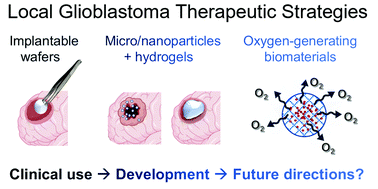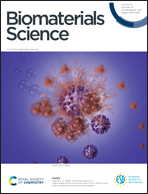Local delivery to malignant brain tumors: potential biomaterial-based therapeutic/adjuvant strategies
Abstract
Glioblastoma (GBM) is the most aggressive malignant brain tumor and is associated with a very poor prognosis. The standard treatment for newly diagnosed patients involves total tumor surgical resection (if possible), plus irradiation and adjuvant chemotherapy. Despite treatment, the prognosis is still poor, and the tumor often recurs within two centimeters of the original tumor. A promising approach to improving the efficacy of GBM therapeutics is to utilize biomaterials to deliver them locally at the tumor site. Local delivery to GBM offers several advantages over systemic administration, such as bypassing the blood–brain barrier and increasing the bioavailability of the therapeutic at the tumor site without causing systemic toxicity. Local delivery may also combat tumor recurrence by maintaining sufficient drug concentrations at and surrounding the original tumor area. Herein, we critically appraised the literature on local delivery systems based within the following categories: polymer-based implantable devices, polymeric injectable systems, and hydrogel drug delivery systems. We also discussed the negative effect of hypoxia on treatment strategies and how one might utilize local implantation of oxygen-generating biomaterials as an adjuvant to enhance current therapeutic strategies.



 Please wait while we load your content...
Please wait while we load your content...